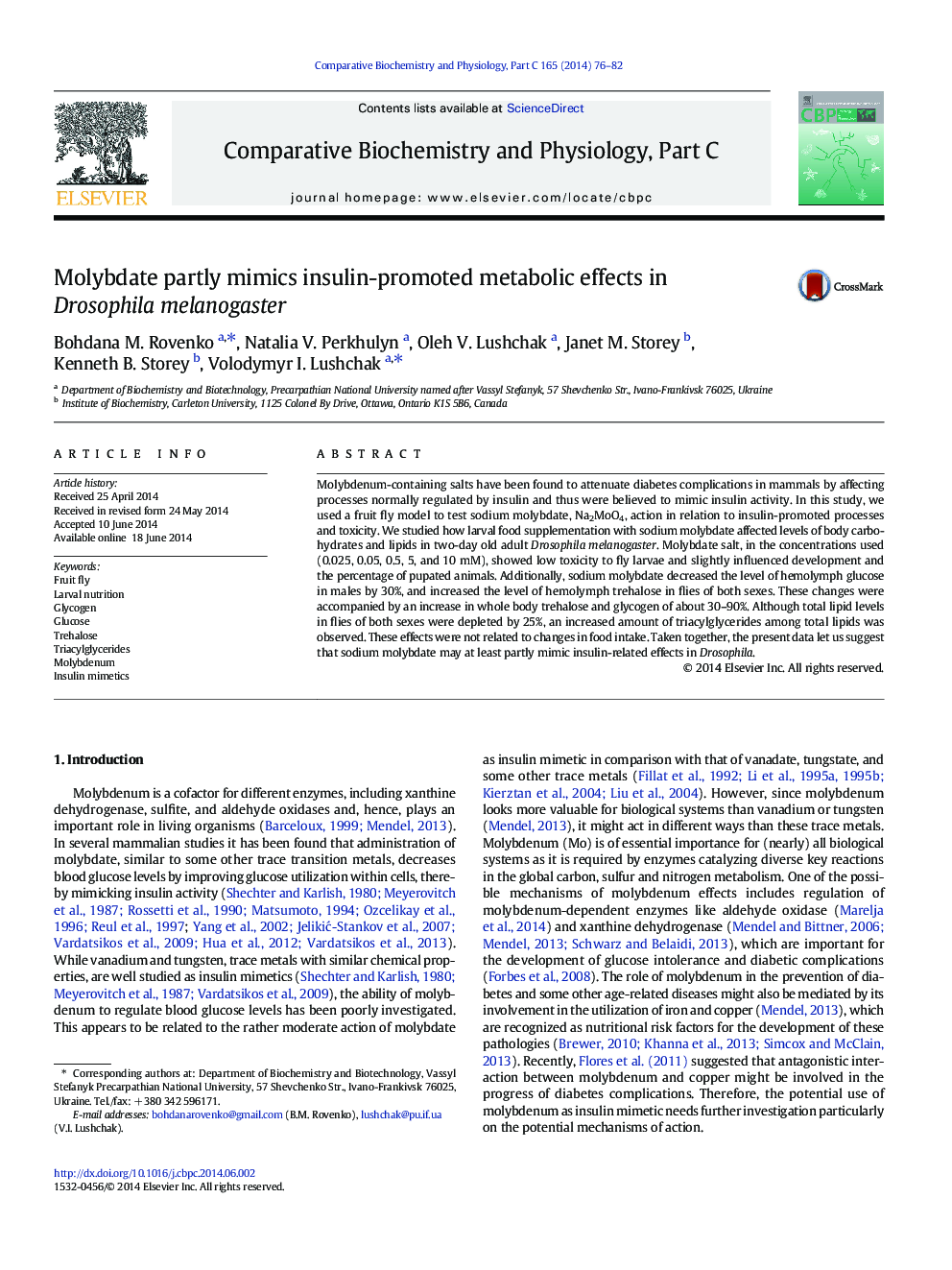| Article ID | Journal | Published Year | Pages | File Type |
|---|---|---|---|---|
| 8319149 | Comparative Biochemistry and Physiology Part C: Toxicology & Pharmacology | 2014 | 7 Pages |
Abstract
Molybdenum-containing salts have been found to attenuate diabetes complications in mammals by affecting processes normally regulated by insulin and thus were believed to mimic insulin activity. In this study, we used a fruit fly model to test sodium molybdate, Na2MoO4, action in relation to insulin-promoted processes and toxicity. We studied how larval food supplementation with sodium molybdate affected levels of body carbohydrates and lipids in two-day old adult Drosophila melanogaster. Molybdate salt, in the concentrations used (0.025, 0.05, 0.5, 5, and 10Â mM), showed low toxicity to fly larvae and slightly influenced development and the percentage of pupated animals. Additionally, sodium molybdate decreased the level of hemolymph glucose in males by 30%, and increased the level of hemolymph trehalose in flies of both sexes. These changes were accompanied by an increase in whole body trehalose and glycogen of about 30-90%. Although total lipid levels in flies of both sexes were depleted by 25%, an increased amount of triacylglycerides among total lipids was observed. These effects were not related to changes in food intake. Taken together, the present data let us suggest that sodium molybdate may at least partly mimic insulin-related effects in Drosophila.
Keywords
Related Topics
Life Sciences
Biochemistry, Genetics and Molecular Biology
Biochemistry
Authors
Bohdana M. Rovenko, Natalia V. Perkhulyn, Oleh V. Lushchak, Janet M. Storey, Kenneth B. Storey, Volodymyr I. Lushchak,
